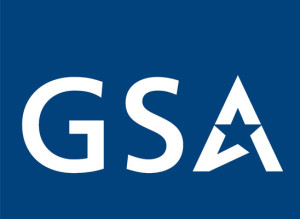

The General Services Administration awarded a spot on the Enterprise Infrastructure Solutions (EIS) contract to four incumbents and six new telecommunication bi...
The General Services Administration awarded 10 companies a spot on the $50 billion next generation telecommunications contract called Enterprise Infrastructure Solutions (EIS).
Almost two years after GSA issued the request for proposals for EIS, the agency opened the door to more than just the big four voice, video and data providers.
Along with the incumbents under the current Networx contract — AT&T, CenturyLink, Verizon and Level-3 — GSA brought in Harris, British Telecom, MicroTech Telecommunications, Granite Telecommunications, Core Technologies and MetTel to increase the competitive landscape.
Sources say GSA received 11 bids in total. It removed Windstream from competition earlier this spring. Windstream protested its removal from EIS in May, only to drop its complaint before any sort of hearing or decision.
GSA released the solicitation for the 15-year, $50 billion EIS in October 2016. In the 251-page statement of work, GSA details four mandatory services: virtual private network service, Ethernet transport service, voice and managed network service. GSA says all other offerings are optional, and it recognizes the changing nature of technological and user requirements and encourages vendors to incorporate upgrades and innovations into their offerings.
GSA has high hopes for EIS.
Bill Zielinski, GSA’s deputy assistant commissioner for the Federal Acquisition Service’s IT category management, said earlier in July that EIS will help agencies achieve their telecommunication goals today and in the future.
“We really feel like now in this next generation of contract that we’re putting together, we really have partnered with industry, with the agencies, to start to say how do we really recognize that the needs that we have in this digitally converged world go far beyond those backbone network services and that we’re going to provide even more and greater access to technologies, not just today’s technologies but providing on-ramps to new and emerging technologies,” Zielinski said.
EIS will replace the Networx contracts — universal and enterprise. Since GSA and its customer agencies made it through the lengthy transition, Networx has been a success. GSA estimated that since 2007, agencies have saved about $3.8 billion, thanks in large part to partnerships in both the public and private sectors, and input from an infrastructure advisory group that’s several federal CIOs help lead.
GSA says agencies spent almost $1.8 billion on Networx services in fiscal 2016 and already have spent $959 million between October and March 2017.
But the transition to Networx from FTS-2001 was arduous and costly. The Government Accountability Office estimated agencies spent $395 million more and took 33 months longer than expected.
Agencies are preparing for the transition to EIS much differently this year than previously. But there already are growing concerns about whether GSA is giving them enough time.
In March, Beth Killoran, the Department of Health and Human Services chief information officer, told Federal News Radio that transitioning 400,000 inventory items may not be feasible in the time allotted.
Other agencies, including the Justice, Interior and the Agriculture departments, released requests for information over the last six months or so in preparation for the EIS transition.
Copyright © 2024 Federal News Network. All rights reserved. This website is not intended for users located within the European Economic Area.
Jason Miller is executive editor of Federal News Network and directs news coverage on the people, policy and programs of the federal government.
Follow @jmillerWFED



